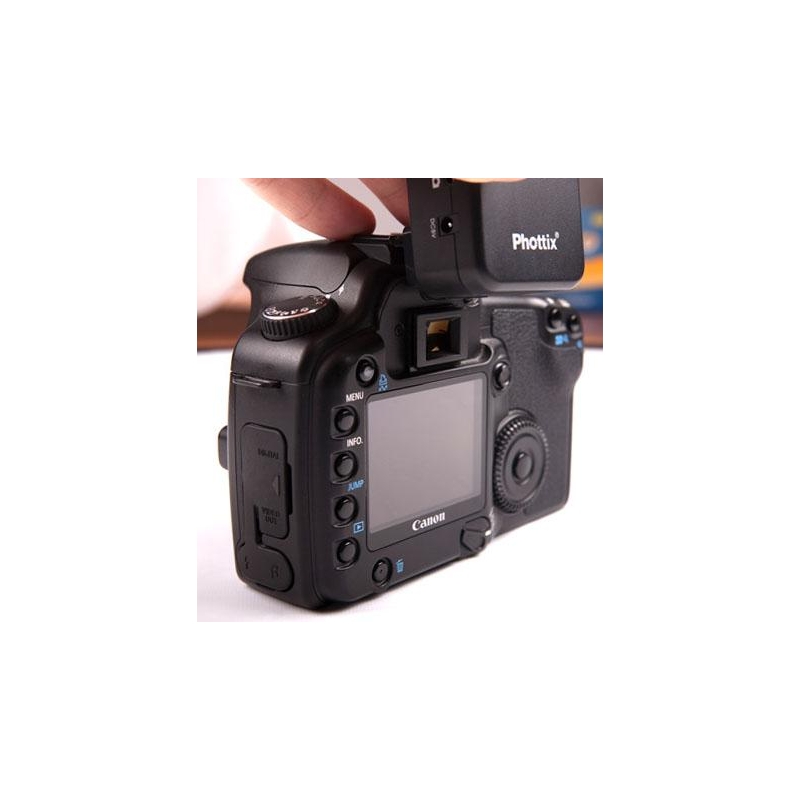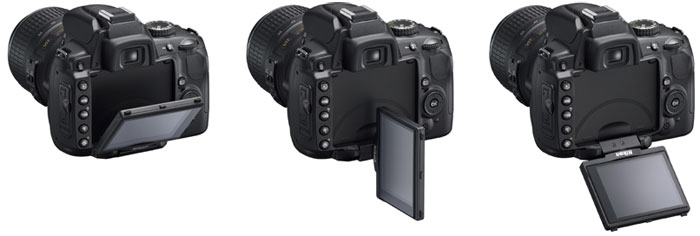

This is because it is equipped with a magnification factor of only 0.78, whereby an image field of 95 % is covered. With such a monitor you can sometimes forget the view through the viewfinder, which is not further tragic. The resolution reaches the usual 230,000 pixels (320 x 240 pixels), and the viewing angle is around 170°. However, it “only” measures 2.7″ (6.9 cm) in the diagonal – there’s only more size at Panasonic. Flexibility, on the other hand, is fully given, whether overhead, close to the floor, around the corner or in self-portraits – you always have the monitor with live image (including face recognition and AF subject tracking) in view. The left row of keys Nikon is accustomed to could be retained, and the camera position is hardly disturbed by the joint at the bottom. This has never been the case with a DSLR before, but it has its advantages. But the DSLR can still score with much more, such as 12.3 megapixels resolution, a high scope of equipment and many individualization options. Unlike other mechanisms, the mechanism does not start at the camera side, but at the bottom, which has both advantages and disadvantages. LiveView and video function really come into their own with this.

The D5000 is the first Nikon D5000 to incorporate a pan and tilt screen in a Nikon DSLR.

Restricted swivel/fold mechanism for tripod operation.Quite slow contrast autofocus in LiveView mode.Missing dimming function (depth of field preview).Good video function (even if without autofocus and microphone connection).High range of functions with many adjustment and individualization options.Connection for GPS (even if it is expensive).This is achieved not so much by the “modest” 12.3 megapixel resolution, but rather by the rotating and swivelling monitor with a joint at the bottom – a premiere not only for Nikon.
#D5000 LIVEVIEW HOW TO#
Like the Canon, it is positioned in the entry-level range with a high fun factor, but knows how to differentiate itself positively from it. The answer to Canons 500D is Nikon D5000. When Canon introduces a new camera, Nikon doesn’t take long to respond. Live View can also be a good choice for portraits, as it enables you to make eye contact with your subject, instead of covering your face with the camera as is the case when you look through the viewfinder.Other Nikon D5000 entry-level DSLR with tilt and swivel monitor: Video DSLR breaks through the 1,000 Euro sound barrier Some DSLRs have Live View accessible with full-time-servo AF (to track the subject continuously) and Face-Priority AF (which locks onto faces) without requiring you to press the shutter button. Tripod mode also has the added benefit of allowing the exact positioning of the AF point anywhere within the frame. Instead of flipping the mirror up and then back down momentarily to autofocus, the camera keeps the mirror raised continuously, reads data off the image sensor and evaluates how abruptly light-to-dark or dark-to-light transitions happen on the image plane, allowing focus without interrupting the Live View display. Nikon DSLRs with a Tripod Live View mode which uses contrast-detect autofocus driven from the imaging sensor. While this is fine for static scenes like landscapes, still lives and macros, it can make it tricky to get a good shot if your subject is moving or requires precise timing. When you press the shutter there's a brief interruption to the Live View display as the camera drops the mirror, focuses and then quickly flips the mirror back up to capture a shot, after which Live View resumes. Since the imaging sensor constantly streams data for the LCD display during Live View, the mirror must be continuously held up while Live View is in use.
#D5000 LIVEVIEW MANUAL#
And it's terrific for precision focusing, as it enables you to check all areas of the subject for sharpness by using the magnifying function on the LCD, then correct any dodgy areas by manual focusing adjustments.ĭSLR phase-detection AF sensors are blocked whenever a camera raises its reflex mirror to expose the imaging sensor, and this is what happens in Live View's handheld mode. Plus, it enables you to check the effects of settings such as white balance, colour processing and exposure which you can't see in the viewfinder. It enables you to view and compose the shot on the LCD screen, enabling you to shoot with the camera at an unusual angle or away from your body. Live View is activated by either a switch or an 'Lv' button on the camera body. Live View shooting mode is essentially what it says on the tin – you're seeing what the camera's lens is seeing, and what the sensor is recording, but on the LCD rather than through the optical viewfinder.


 0 kommentar(er)
0 kommentar(er)
